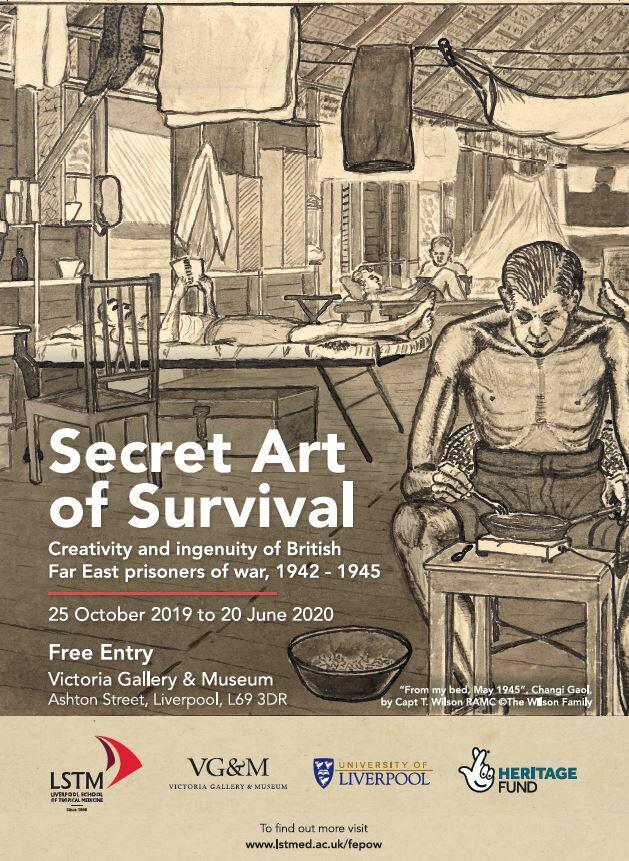
Final preparations are underway for a new exhibition displaying the artwork of British FEPOW, Far East prisoners of war, who were captured by the Japanese during the second World War.
“Secret Art of Survival: Creativity and ingenuity of British Far East prisoners of war, 1942 -1945” will be open to the public between 25th October 2019 and 20th June 2020. The exhibition provides a unique and fascinating glimpse of the battle to survive extreme adversity in wartime and the self-help strategies used by British servicemen including making art as therapy.
The exhibition is a collaboration between LSTM, the University of Liverpool’s Victoria Gallery and Museum and made possible by the Heritage Lottery Fund, through money raised by National Lottery players, trust funds and foundations as well as support from individuals.
The exhibition reflects LSTM’s longest running collaboration with FEPOW veterans, now in its seventh decade. On the men’s return after captivity LSTM was a centre for their treatment. This unique relationship has led to world class research into tropical medicine and the recording of the psychological impact of captivity, identifying symptoms associated with post-traumatic stress disorder (PTSD) years before it became a recognised condition.
The project remains active within LSTM under the stewardship of Emeritus Professor Geoff Gill, who treated many of the men at LSTM, and Honorary Research Fellow Meg Parkes, who carried out an oral history project with many of the survivors later in their lives. Along with numerous research papers, the project has resulted in the publication of two books, Captive Memories and Burma Railway Medicine.
They have now teamed up with Jenny Wood, retired Senior Art Curator, Imperial War Museums, to publish a companion book to the exhibition Captive Artists: the unseen art of British Far East prisoners of war, which will be available from mid-November.
Meg Parkes said: “This is the first time that the collection has been brought together and seeing it in situ really gives an insight into the ingenuity and creativity of the men’s survival skills. An education package has been developed alongside the exhibition, bringing the story of these men to future generations so that they are not forgotten. As the daughter of a FEPOW myself I am delighted to see my father’s artwork, like so many other unknown works featured, hanging alongside those of internationally renowned artists such Jack Chalker and Ronald Searle.”
You can find out more about the FEPOW project and the exhibition here.